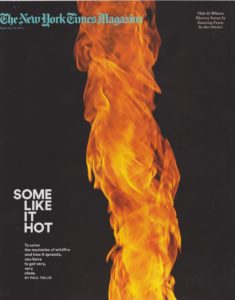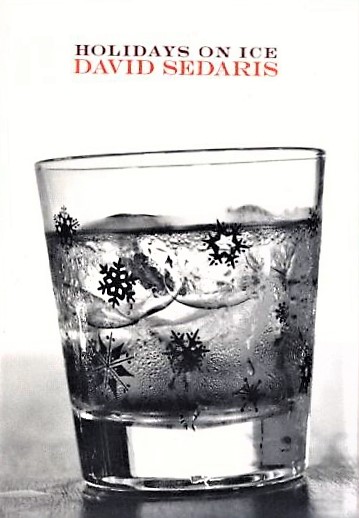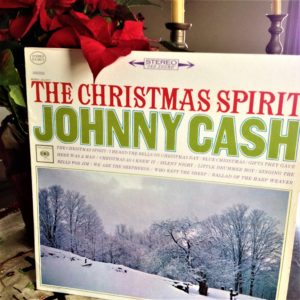Yes, it’s the time of year to look back on the good things that happened this year (and try to forget the bad, if only for a little while). First off: John McPhee wrote a book that gives lesser beings like us tips about the writing process. That has to be worth at least a little smile, right? And I’m also grateful for some wonderful literary journalism this year, including four of the stories listed below in the “What I’m reading online” category. Finally, it’s been a delight to be editing Storyboard this year — dream job, indeed. Here’s to more dreams coming true in 2018 for all of us.

The Pitch: a veteran freelancer on pitching The New York Times Magazine and more. This is another installment of Katia Savchuk’s great (and useful) series called “The Pitch.” Here she talks to freelancer Paul Tullis, who has been on both sides of the pitching equation, as an editor and a reporter. From the reporter’s side, he says, “I have sold narrative feature pitches in two sentences, but it’s rare. It makes sense to say if you can’t get your idea across in three paragraphs, you need to work on your idea. That said, if it’s an obscure topic, you might need a paragraph just of background to let people know it’s actually important.”
The soundtrack: “Both Sides Now,” by Kate Wolf. This is my favorite version of the Joni Mitchell song. Her deeper voice and impeccable timing bring a new richness to a familiar song. (If you don’t know her version of “Peaceful Easy Feeling,” it’s a revelation.)
One Great Sentence
David Sedaris, “SantaLand Diaries” from “Holidays on Ice.”“We were taken to the ‘Oh, My God, Corner,’ a position near the escalator. People arriving see the long line and say “Oh, my God!” and it’s an elf’s job to calm them down and explain that it will take no longer than an hour to see Santa.”
Read why we think it’s great.

“Draft No. 4”: the legendary John McPhee’s “master class in the writer’s craft.” Former Los Angeles Times Book Editor David Ulin has written a lovely essay on why this book by one of the gods of literary journalism is so good. In it, he includes some great lessons from McPhee, like this one: “A piece of writing,” he insists, “has to start somewhere, go somewhere, and sit down when it gets there. You do that by building what you hope is an unarguable structure. Beginning, middle, end.” And this: “What, he began to wonder, about a double profile, involving two figures who are connected but at the same time distinct? ‘In the resonance between the two sides, added dimension might develop. Maybe I would twice meet myself coming the other way. Or four times. Who could tell what might happen? In any case, one plus one should add up to more than two.'”
The soundtrack: “Suspended from Class,” by Camera Obscura. This is one of my favorite underrated bands. This song popped into my head after I read the publisher’s line about “a master class in the writer’s craft.” The song begins with this line, “You’re such a beautiful writer/That’s not all you are.” But my favorite line is from the chorus: “I should be suspended from class/I don’t know my elbow from my ass.”
What I’m reading online: I spent some time this month looking back on some top-notch work of the past 12 months. I’m going to list three of my favorites that we spotlighted on Storyboard, and one I wish we had.
How to Get Away With Murder in Small Town India, by Ellen Barry. I absolutely loved this story, the final piece The New York Times correspondent did as she left New Delhi for London. The writing is spectacular, using first person to unparalleled effect. In this Annotation Tuesday!, Barry says, “If you are using the first person, you almost by necessity need to be a character. Being a rich white person in rural India, or any place that poor, is a strange, uncomfortable feeling much of the time. So I suppose I wanted to explore that.”
The Detective of Northern Oddities, by Christopher Solomon. This piece for Outside magazine is another story that features standout writing (and humor) to draw readers into a serious subject, this time climate change and the sinister effects it may be having on wildlife. It’s about a scientist in Alaska who spends her days “slicing open furry dead animals,” and it features what may be my favorite line in a story this year: “A big pair of garden shears sat on the counter, as foreboding as Chekhov’s gun on the mantel.” Read Allison Eck’s annotation for the inside scoop on how he wrote and reported the story.
Seven Days of Heroin, by the Cincinnati Enquirer staff. I’m still blown away by both the concept and execution of this piece. Sixty staffers reported even the tiniest details of one week in the opioid crisis in Cincinnati, and in a stunning feat of editing, a rich narrative emerged. This shows you don’t have to be one of the “big” newspapers to do standout work on a national issue; you just need a great idea and the commitment to use a large portion of your staff in a show of reporting force. In our Notable Narrative, lead reporter Terry DeMio says, ‘We just wanted to show people: This is what a heroin epidemic looks like.”
A Most American Terrorist: the Making of Dylann Roof, by Rachel Kaadzi Ghansah. This tremendous profile of the young man who killed nine African Americans at a church in Charleston, S.C., features one of the best ledes of the year: “Sitting beside the church, drinking from a bottle of Smirnoff Ice, he thought he had to go in and shoot them.” The writing (and the reporting) is stellar throughout the story, though, as Ghansah follows a trail leading back from that terrible moment to his childhood. This is an example, like Gay Talese’s “Frank Sinatra Has a Cold,” where a reporter captures the essence of a person without interviewing him.

What’s on my bedside table: “Holidays on Ice,” by David Sedaris. After reading this week’s One Great Sentence from contributor Julia Shipley, I had to go back and reread what must be the funniest holiday book of all time. And of course the funniest story in it is “SantaLand Diaries,” in which he gets a job as an elf at Macy’s in New York. Let me just give you a smorgasbord of great lines: “The woman at Macy’s asked, ‘Would you be interested in full-time elf or evening and weekend elf?’ I said, ‘Full-time elf.'” And “I want you to remember that even if you are Photo Elf on a busy weekend, YOU ARE NOT SANTA’S SLAVE.” And this, about a fellow elf Sedaris had been flirting with, “Snowball just leads elves on, elves and Santas. He is playing a dangerous game.” And, finally, this, when he upsets a customer: “‘I’m going to have you fired!’ and I wanted to lean over and say, ‘I’m going to have you killed.'”

What’s on my turntable: “The Christmas Spirit,” by Johnny Cash. This isn’t your traditional Christmas album — but when was Cash ever traditional? It opens with the title song, but there’s no singing, except for the backing choir humming “O Little Town of Bethlehem” as Cash does a little spoken-word storytelling. And even if the album has some familiar favorites, like “Silent Night” and “The Little Drummer Boy,” Cash wrote many of the songs on the album. This album won’t replace my perennials — Vince Guaraldi and Frank Sinatra — but who’d pass up a chance to hear Johnny Cash?
If you want to chat about storytelling (or music), I’m Storyboard editor Kari Howard, and you can reach me at editor@niemanstoryboard.org. Or you can find me at @karihow on Twitter.



